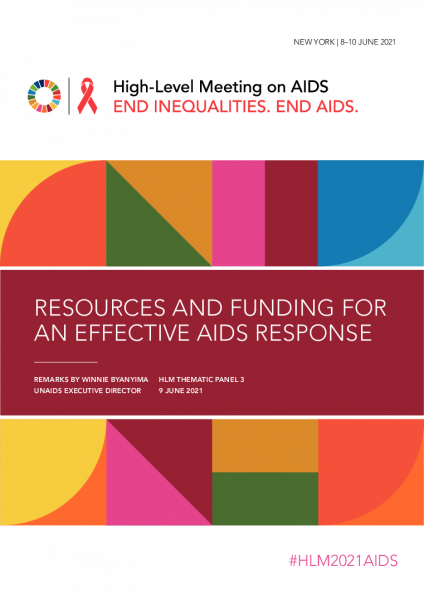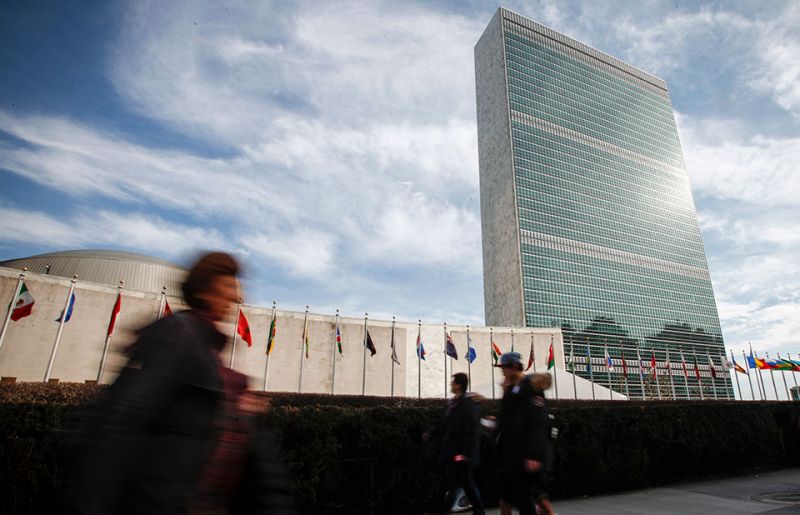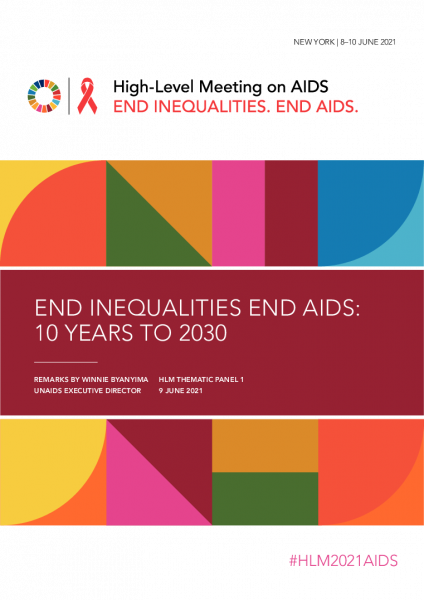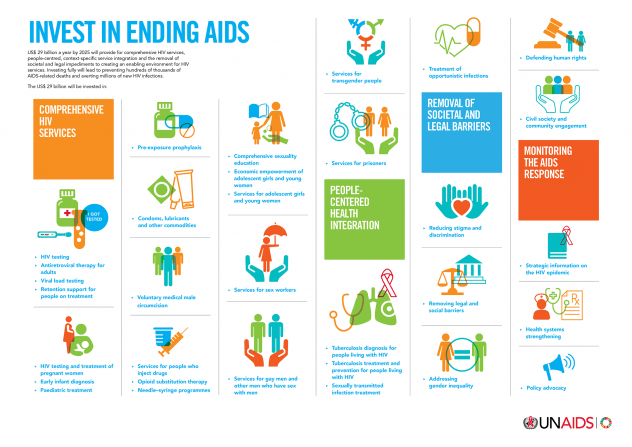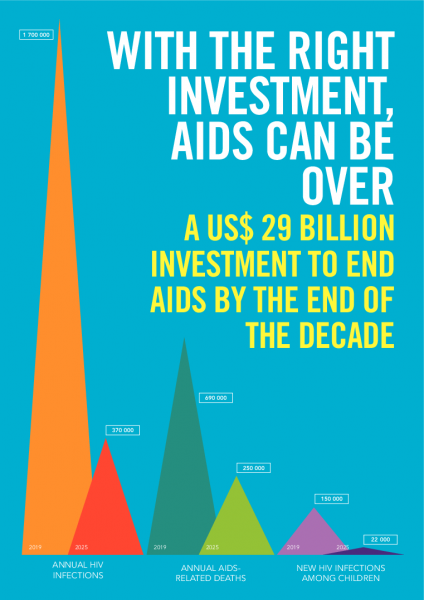GENEVA, 19 November 2021—Having experienced major shortfalls in funding since 2015, UNAIDS convened donors, partners and Programme Coordinating Board members in Geneva, Switzerland, for a dialogue to help bolster UNAIDS’ efforts in supporting countries to end AIDS by 2030 as part of the Sustainable Development Goals.
During the meeting, held on 15 November 2021, UNAIDS warned that despite a growing number of countries demonstrating the feasibility of ending AIDS as a public health threat, the global HIV response is faltering, resulting in a slowing decline in new HIV infections and AIDS-related deaths. Around 1.5 million people became newly infected with HIV in 2020, and every 60 seconds someone died of an AIDS-related illness. Without an immediate course correction and renewed momentum, UNAIDS fears that hopes for reaching the 2030 target of ending AIDS could vanish.
“As we move into the next phase of the AIDS response, the risk of political neglect increases as the epidemic concentrates among the most marginalized, discriminated against and criminalized—key populations and adolescent girls and young women,” said Winnie Byanyima, Executive Director of UNAIDS. “The Joint Programme is needed now more than ever.”
The meeting was held to deepen the understanding of the work of UNAIDS and its critical role in global health. Speakers highlighted that since its inception in 1996, UNAIDS has brought unique value to the global AIDS response, leveraging the combined strengths of the United Nations system, leading efforts to expand access to HIV prevention, treatment and care services, increasing global resources for HIV, building political commitment and collecting data to build evidence-informed responses.
The Chair of the UNAIDS Programme Coordinating Board demonstrated how UNAIDS’ support has adapted to and been critical in the COVID-19 crisis. “In Namibia, we have seen very clearly the contribution of UNAIDS during this very difficult past year as we experienced an exponential increase in COVID-19 cases, hospitalizations and deaths,” said Julia Imene-Chanduru, representing the Chair of the UNAIDS Programme Coordinating Board. “Our health system was severely overstretched. During this time, UNAIDS supported Namibia to ensure the continuity of treatment for people living with HIV by supporting us to move to multimonth dispensing of antiretroviral treatment and assisting us in strengthening community engagement for COVID-19 and HIV.”
Speakers emphasized that UNAIDS has also been instrumental in tackling stigma and discrimination and fighting for equality and human rights. Overall, these unique, essential contributions from UNAIDS account for less than 1% of all funding available for HIV activities in low- and middle-income countries.
“Our health is a bedrock not only for life itself, but it is essential to achieving the Sustainable Development Goals,” said Amina Mohammed, Deputy Secretary-General of the United Nations. “UNAIDS is smart and brings transformative action to life. Of the total global funding for HIV, the 1% that UNAIDS represents helps leverage billions more. I urge you to continue to increase your contributions to this organization and support its incredible life-saving work.”
Since 2015, UNAIDS has experienced severe shortfalls in funding. For 2020 and 2021, UNAIDS had an approved annual budget of US$ 242 million. In 2020, UNAIDS raised US$ 194.1 million, but is expected to raise only US$ 165 million in 2021. The meeting provided an opportunity to deepen the understanding of donors of the work of UNAIDS and warned of the cost of inaction or insufficient funding.
“Our current funding situation limits what is possible and what can be made possible,” said Ms Byanyima. “It is time to invest. It is time to match our political ambition and equip all our stakeholders to drive the response forward and help realize the human right to health for all.”
“It is our responsibility as the Joint Programme to put AIDS back on the development agenda. But not only with the speeches but also with budgets. The call of the nongovernmental organization delegation is that we want a fully funded UBRAF. We want a fully funded UNAIDS and fully funded AIDS response,” said Gracia Violeta Ross Quiroga, National Chair of the Bolivian Network of People Living with HIV/AIDS (REDBOL).
UNAIDS urges donors and partners to create momentum around potential opportunities and mutual commitments relating to funding UNAIDS and the AIDS response, including prioritizing resource allocation and priority-setting. UNAIDS urges donors to ensure adequate, predictable and flexible funding for UNAIDS through multi-year agreements for core and non-core funding to fully support UNAIDS’ efforts to end AIDS by 2030.
“We reiterate calls that have been made today by the Secretariat and Cosponsors for funding to be predictable and sustained in order to enable the Joint Programme to deliver on our common goals. Kenya remains committed to supporting this process and stands ready to engage in any subsequent discussions,” said Peace Mutuma, Health Attaché, Permanent Mission of Kenya to the United Nations in Geneva.
UNAIDS
The Joint United Nations Programme on HIV/AIDS (UNAIDS) leads and inspires the world to achieve its shared vision of zero new HIV infections, zero discrimination and zero AIDS-related deaths. UNAIDS unites the efforts of 11 UN organizations—UNHCR, UNICEF, WFP, UNDP, UNFPA, UNODC, UN Women, ILO, UNESCO, WHO and the World Bank—and works closely with global and national partners towards ending the AIDS epidemic by 2030 as part of the Sustainable Development Goals. Learn more at unaids.org and connect with us on Facebook, Twitter, Instagram and YouTube.




